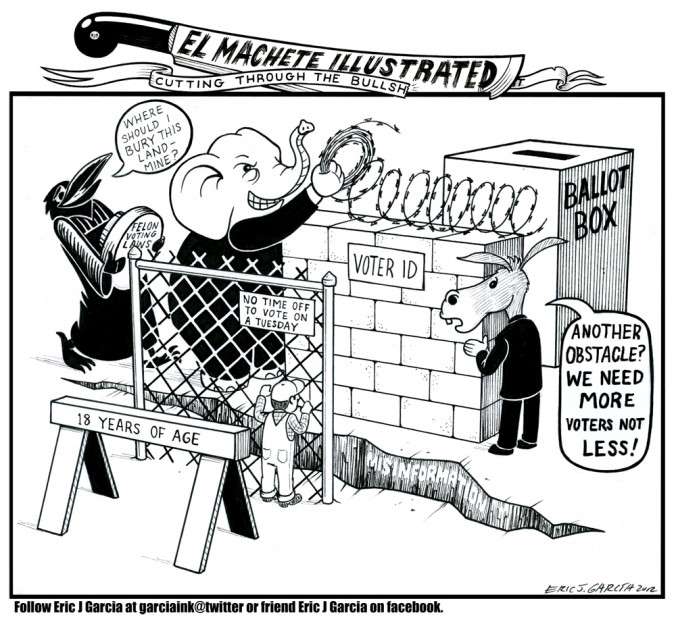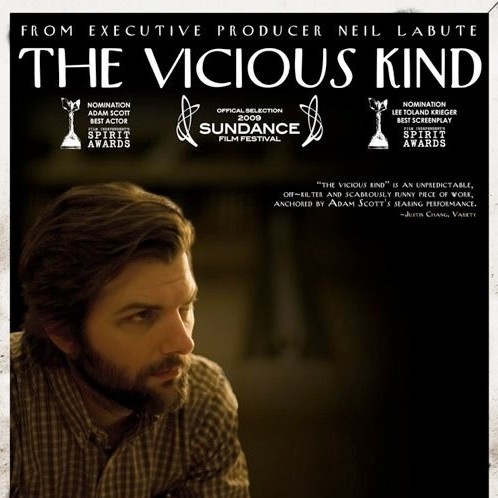EXPO Chicago 2012 from F Newsmagazine on Vimeo.
By Gilberto Alfredo Salazar-Caro
A look at the first International Exposition of Contemporary/Modern Art & Design at Chicago’s Navy Pier. F News talks to gallerists and documents some of the striking artworks.
_________________________________________________________________________________________
SAIC Staff and Faculty Reactions:
The fair this year felt elegant and very intentional to me — from the design of the space by Studio Gang Architects to the curating of the participating galleries and the selection of programs. The inclusion of the EXPO/Dialogues series of events and the Collectors’ Xchange (two programmatic areas where SAIC partnered with Expo Chicago) was something that I have not seen at other art fairs. Dedicated venues for these types of panel discussions, conversations and provocative artistic discourse in the middle of what is, essentially, a temporary art mall, added a layer of complexity to the fair in my opinion. SAIC’s partnership with Expo Chicago during the fair’s inaugural year reflects the importance of our school in the art community of this city and beyond.
– Amy Honchell, Fiber and Material Studies Faculty
The size was a bit overwhelming, which I thought was a good thing in the end. The expo brought so many exciting works by established and emerging artists into one setting, and right in the middle of Navy Pier we were able to get a glimpse of the international art market. I’m an art historian and what I liked the most about this expo was I was able to see big name artists’ more recent and lesser-known works that don’t appear in art history books, such as the Fluxus artist Dick Higgins’ paintings (when you think he’s a performance artist), Louise Bourgeois’ intimate-sized, pastel toned sculptures (not giant spiders or phallic forms), and Judy Chicago’s monotone acrylic paintings (which have very little resemblance to “The Lunch Party,” for example). And there were my all-time favorites like Lucio Fontana, Yayoi Kusama, Lee Ufan, and Stephen Balkenhol. My greatest find in the expo hall was Suh Do-Ho’s framed, two-sided installation that contained drawings and fabric sculptures of a door knob. Although I can’t afford to buy art from the participating galleries, I came home with Vosges chocolate bars that I bought from one of the booths, feeling really grateful for the experience provided by the expo.
-SooJin Lee, Art History Instructor
_________________________________________________________________________________________
Booth #205 — Kavi Gupta at EXPO
By Alexander Wolff
Upon entering the Kavi Gupta Gallery booth at this year’s EXPO Chicago, viewers were greeted by pieces that ranged from a human-sized cartoon bear sculpture with creamy, rainbow-colored eye sockets, to lengths of decommissioned fire-hose attached vertically to sprawling horizontal wooden panels. While this type of juxtaposition sometimes proves distracting, it instead exhibits the great diversity of conceptual and visual approaches showcased by the Kavi Gupta Gallery. Two of the biggest highlights of the booth were urban planner and installation artist Theaster Gates, and the consistently self-reflexive multimedia artist Tony Tasset.
Utilizing his faculties of allegory, social criticism, and historical memory, Gates work seems to re-territorialize the methods of Arte Povera associated artists like Jannis Kounellis to articulate them in issues attached to the aftermath of the plight, repression, and injustice experienced by the black community throughout U.S. history. Just as Kounellis employs quotations of cultural signifiers and debris to invoke the true history of the Mediterranean without nostalgia or revisionism, Gates uses the power of U.S. specific cultural and historical indexes to a similar, though considerably different effect.
In pieces like “Civil Tapestries (2012),” Gates uses decommissioned fire hoses and old wooden supports to mediate between the strife of the civil rights movement, feelings of national alienation, and the present day. The hoses’ flag-like formation and red, white, and blue coloration invoke the national crisis these events caused, and the subsequent creation of the civil rights act. Additionally, the scale and orientation of “Civil Tapestries” invites ideas of domesticity and banal commemoration — an idea reinforced by Gates’ similar but un-exhibited piece “Civil Throw Rugs (2011),” which utilizes the hoses as floor mats. This domestication process is also evident in the sculptures “Stack 6901.30” and “Stack 6901.31.” These concrete pillars reference the construction of urban infrastructure in both appearance and material, though they stand at only 43 inches. By using these signifiers of black cultural history and urban architecture, his work attempts to dually realize the often-grim past, and the present, as a cohesive and uncensored whole that can then be shaped and improved as it moves forward into the future.
On an entirely different but equally valid note was the snarky work of Tony Tasset. Utilizing almost the complete opposite ethos of Gates, Tasset’s work attempts to be as confrontational and internally critical as possible. With his aforementioned sculptural piece “Bear (2012),” and paintings like “Ecstasy of a Square (2012)” and “The Horror (2012),” Tasset seems to create hyper-saturated statements on the absurdity of creating and collecting contemporary art and the U.S.’s over-stimulated culture industry. These paintings seem to be concerned with lambasting the already broken “no-no’s” of painting by sloppily applying oil paint in a rainbow of colors around mounted animal skins. The pelts seem to be a quotation of his previous series “Domestic Abstraction (1986)” (viewable at a side booth of the Kavi Gupta Gallery), which place animal hides inside sleek modernist frames. The pieces seem aware that they are bought and sold by galleries to be displayed in collections, much like a hunter would display an expensive pelt on the wall of a den.
His paintings “Ecstasy of a Square” and “The Horror” seem to combine both of these impulses with his more recent penchant for the cheese-value of rainbow colors, as seen in sculptural pieces like “Bear.” Tasset’s work tries to play a joke on the purchaser, as they are already critically aware of their own excesses. But if this joke is understood, isn’t it just complicity fueling the machinations of industry? It is a problem inherent to the huge market for many of the so-called “bad paintings” of the ‘80s and ‘90s, which these works seem to refer back to. While critics often explore this dilemma and the return of the easily marketable medium of painting, Tasset’s oeuvre is clever, diverse, and slippery enough to defend against potential allegations of him conforming to the market’s taste purely for profit.
Also exhibited at the booth were SAIC alumni Angel Otero and Antonia Gurkovska. Gurkosvka’s work always seems to be low-stakes and processed-based, displaying gigantic sheets of spray-painted paper with serialized rows of acrylic paint and incisions. Works like “Opal (2012)” and “Thulium (2012)” are technically and aesthetically interesting, but they feel so palatable and general that they fail to make an impression. If an artist tries to articulate the history of painting with textual references to artists like Peter Paul Reubens, for what purpose is this history being culled other than reinterpretation? Re-territorializing a past artist’s aesthetic details in the present without a strong conceptual basis is an issue that sometimes extends to the paintings of Otero. That being said, his work seems to be progressing in an interesting new direction evident in the two recent pieces of sculptural work by Otero exhibited at Expo. Works like “Unititled (2012)” consist of tangled masses of multicolored ceramic pieces and bent fence lattice that seems to have more conflicted implications than his previous paintings. By evoking a personal motif of lattice from Puetro Rico, combining it with clumps of flesh-like ceramic pottery, and distorting it into a sculpturally challenging object, it seems to present a more realized reaction to notions of culture, history, and domesticity.
The Kavi Gupta gallery was a definite point of interest within the fair. While the gallery held its own in sheer conceptual and aesthetic diversity, its true strength lies in exhibiting artists with talent for exploring societal and cultural constructions while maintaining a firm grasp on their own place in these interactions.







